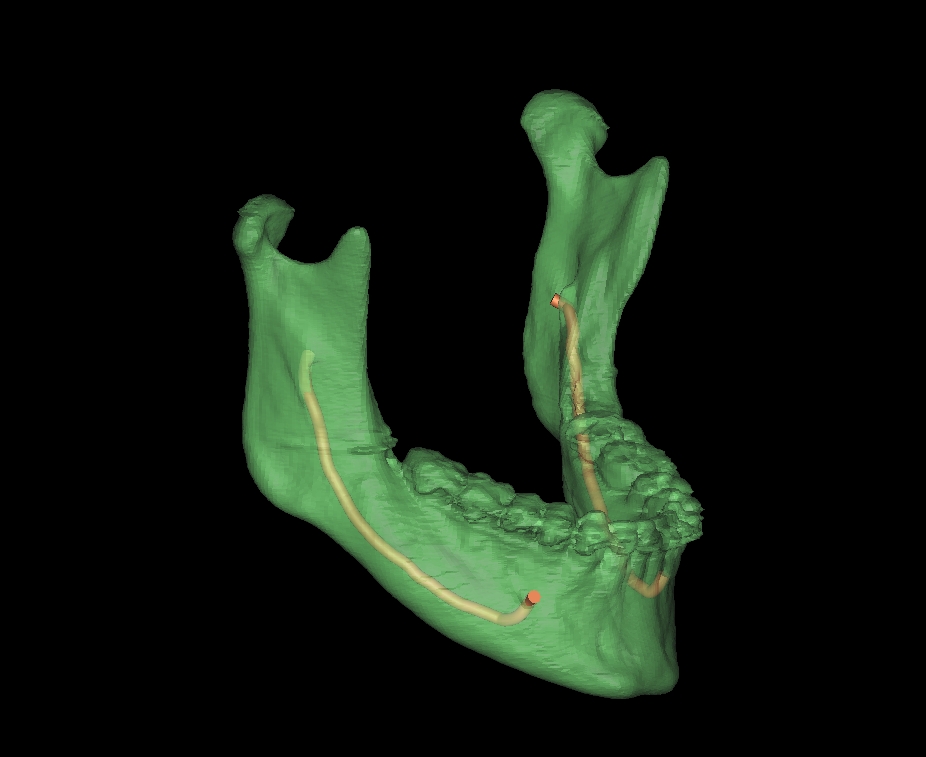Friday, October 31, 2008
14644
Anatomical Variants Of The Distal Inferior Alveolar Nerve: Spatially Defining Nerve Course With 3D Computed Tomography
PURPOSE: Injury to the inferior alveolar nerve (IAN) is a complication of both operative procedures and mandibular trauma. Numerous studies have addressed the course of the IAN, however most have concentrated on its posterior portion and were conducted on cadavers or on older patients. As trauma and elective orthognathic procedures are common in young adults, anatomical study of the anterior portion of the IAN in a younger population is of practical value.
METHODS AND MATERIALS: 21 patients (15 to 21 years old) underwent computed tomography (CT) of the skull and facial bones for reasons other than mandibular pathology (42 hemi-mandibles). Images were reformatted using Simplant/CMF software (Materialise, Leuven, Belgium) (Figure 1). Examination focused on the coronal section marked by the largest diameter opening of the mental foramen (MF). The three-dimensional course of the IAN was studied over at least ten adjacent sections (Figure 2).
SUMMARY OF RESULTS: Three patterns (Types 1, 2, 3) in course of the anterior portion of the IAN were observed (Figure 3). In all three types the IAN descended while traveling anteriorly within the canal. Just proximal to the MF however its course varied as follows: Type 1: after reaching its most inferior point, the IAN curved superiorly at an acute angle to reach the MF, Type 2: the IAN abruptly turned superiorly and coursed laterally before exiting the MF, Type 3: the IAN reached its most inferior point anterior to the MF, turned superiorly and laterally to reach the level of the MF, and then traveled posteriorly before exiting the MF. The configuration was Type 1 in 62% of hemi-mandibles, Type 2 in 9.5 %, and Type 3 in 28.5%. For each patient, the same configuration was noted bilaterally.
CONCLUSIONS: Using CT and adequate software support, demonstration of the 3D course of the IAN was relatively simple. The course of the anterior portion of the IAN assumed one of three distinct configurations prior to exiting the MF. Understanding these variations may be of benefit in safely planning operative procedures in the anterior body of the mandible.
ACKNOWLEDGEMENT: This study is supported by Shriners Hospitals for Children (Grant #8510).
Figure 1

Figure 2

Figure 3

